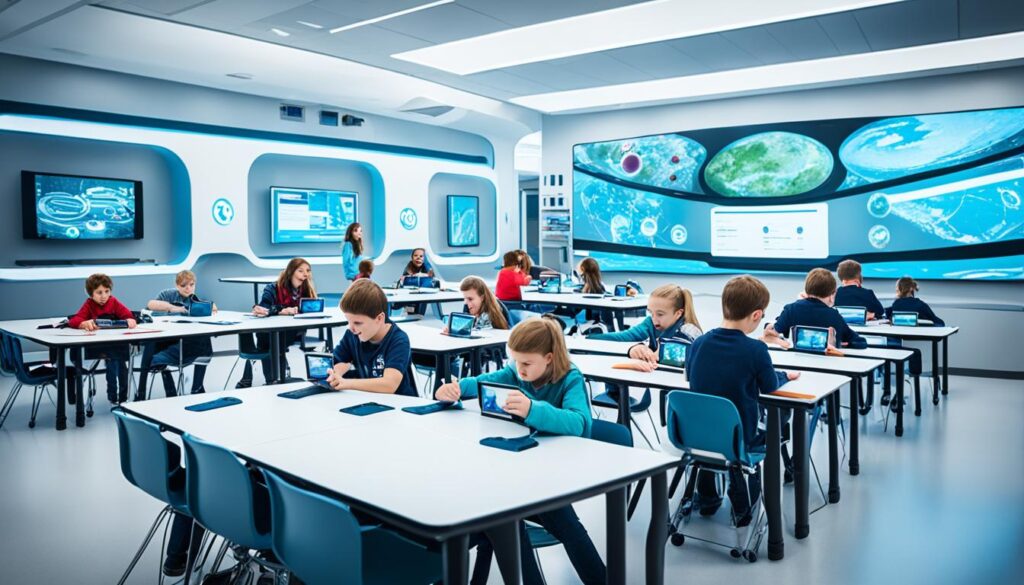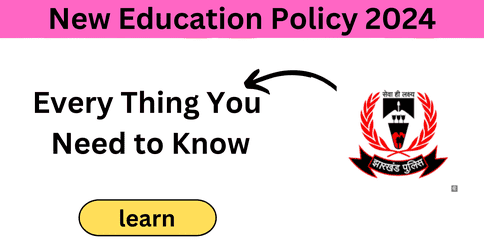The New Education Policy 2024 -2025 is changing India’s schools. It’s made for the 21st century. The goal is to make learning more complete, flexible, and focused on what students and the community need.
Table of Contents
This policy covers the main points of the New Education Policy 2024 – 2025. It talks about its goals, big changes, and what it means for students, teachers, and schools. The NEP wants to make sure every Indian gets great education. It aims to turn India into a top place for knowledge worldwide.
Introduction to the New Education Policy 2024-2025
The New Education Policy (NEP) 2024-2025 wants to change Indian schools for the better. It focuses on educational quality, equity and inclusion, innovation and flexibility, digital learning, and curriculum and pedagogy. The goal is to make learning fun, less stressful, and useful in real life.
Objectives
The main goals of the NEP 2024-2025 are to improve educational quality and ensure equity and inclusion in schools. It aims to boost innovation and flexibility for schools and teachers. It also wants to strengthen digital learning and change how we teach and learn.
Vision
The NEP 2024-2025 dreams big. It wants to turn India into a place where knowledge is key and a leader in the world. By offering top-notch education to everyone, India will become a center for research and innovation. This will help India grow and compete on a global scale.

Key Changes in School Education
The New Education Policy (NEP) 2024-2025 brings big changes to school education in India. It focuses on foundational literacy and numeracy. This means making sure kids learn the basics well for life.
Foundational Literacy and Numeracy
Early childhood education is key, says the NEP. It wants all kids to know the basics by Grade 3. This will happen through better Anganwadi centers and pre-schools. Plus, special efforts under the National Mission on Foundational Literacy and Numeracy.
New Curricular Structure
The old 10+2 system is changing to a 5+3+3+4 design. This matches the ages 3-8, 8-11, 11-14, and 14-18. It’s all about holistic development and multidisciplinary learning.
Reduced Curriculum Content
The curriculum is getting simpler, focusing on the most important stuff. This means less rote learning and more vocational education from Grade 6. It prepares students for today’s world.
Assessment Reforms
Assessments are changing to focus on more than just tests. There will be regular checks, competency-based formative assessments. Board exams will be easier and focus on core competencies. A new center, PARAKH, will help with testing and standards.
| Key Changes | Details |
|---|---|
| Foundational Literacy and Numeracy | Universal achievement by Grade 3 through strengthened Anganwadi centers, pre-schools, and the National Mission on Foundational Literacy and Numeracy |
| New Curricular Structure | Shift from 10+2 to a flexible 5+3+3+4 design for holistic development and multidisciplinary learning |
| Reduced Curriculum Content | Focus on core essentials to reduce rote learning and integrate vocational education from Grade 6 |
| Assessment Reforms | Shift to competency-based formative assessments, easier board exams, and the establishment of PARAKH for holistic evaluation |
Key Changes in Higher Education
The New Education Policy (NEP) 2024-2025 brings big changes to India’s higher education. It focuses on multidisciplinary institutions and flexible undergraduate education.
Multidisciplinary Institutions
The NEP wants big, diverse institutions. These places let students pick subjects from many areas. They will make learning more collaborative and interdisciplinary.
Undergraduate Education
Undergraduate programs will be more flexible and varied. They will include four-year programs for research and starting businesses. The NEP also offers multiple exit points.
Students can get certificates after 1 year, diplomas after 2 years, and degrees after 3 or 4 years. This depends on what they want and need.
These changes make higher education more responsive to students’ needs and the job market. They also support lifelong learning and multiple entry and exit options.
Regulatory Reforms
The Indian government is making big changes in higher education. These changes aim to make education better, more accessible, and connect schools with the industry. A new body, the Higher Education Commission of India (HECI), will manage all higher education.
The HECI will have four parts: NHERC for rules, NAC for checking quality, HEGC for money, and GEC for standards. This will make education more open, responsible, and efficient.
India has over 15 lakh schools, 25 crore students, and 89 lakh teachers. In higher education, there are 3.74 crore students in 1,000 universities and 39,931 colleges. The government wants to increase education by 2035. So, good rules are very important.
The National Education Policy (NEP) 2024-2025 talks about these changes. It plans to open a new university every week for 15 years. This will need a lot of money, with plans to spend 6 percent of GDP on education.
These reforms also aim to match what the industry needs with what schools offer. The policy wants to link 100 schools and companies each year. This will help students get ready for the changing job market. The US and China lead in making money from Artificial Intelligence (AI). India’s schools need to keep up to prepare students for future jobs.
Online and Digital Education
The New Education Policy (NEP) 2024 wants to make digital learning better for all students in India. It plans to use technology to give everyone quality education. The policy has many new ideas to change education.
Virtual labs are a big part of the NEP. They will give students lots of digital tools to learn with. Students can do hands-on learning from anywhere, not just in class. This will help students in cities and rural areas get the same good education.
The NEP also wants to start a National Educational Technology Forum (NETF). This will be a place for sharing new ideas and working together. Teachers, leaders, and tech experts will work together to make education better with technology.
Read Also : Bsc Computer Science me kitne subjects hote hai
FAQ
What are the primary objectives of the New Education Policy 2024-2025?
The main goals of the NEP 2024-2025 are to make education better, ensure everyone gets a fair chance, and encourage new ideas. It also aims to improve digital learning, update the curriculum, and change how we teach.
What is the vision of the New Education Policy 2024-2025?
The NEP 2024-2025 wants to turn India into a place full of knowledge and innovation. It plans to give top-notch education to everyone. This will make India a center for research and new ideas.
How will the new curricular structure be implemented?
The old 10+2 system will change to a 5+3+3+4 setup. This will cover ages 3-8, 8-11, 11-14, and 14-18. This change will help with all-around growth and learning in many subjects.
What changes are proposed in the assessment system?
The old exams will be changed to focus on more than just tests. There will be regular checks, easier exams, and a new center called PARAKH to help with testing.
How will higher education institutions be restructured?
Big, diverse colleges will offer flexible courses. Students can pick subjects from different areas. They can also start and stop their studies at various points to get different qualifications.
What are the key regulatory reforms proposed in the New Education Policy?
A single body, the HECI, will manage higher education. It will have four parts: NHERC for rules, NAC for checks, HEGC for money, and GEC for standards.
How will digital learning be enhanced under the New Education Policy?
The NEP plans to create virtual labs and a National Educational Technology Forum. It also wants to improve internet and device access for better online learning.









